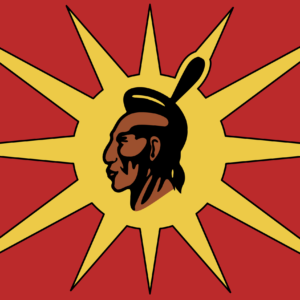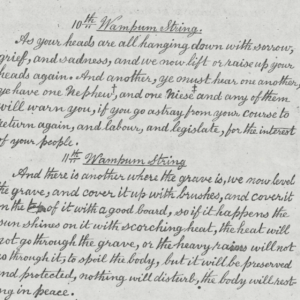
Frederick Haldimand made a declaration in 1784 on behalf of the King of England and there are people of Six Nations who are still carrying copies of this ancient decree around with them. Rumors say that Joseph Brant carried the Haldimand Proclamation around with him in his pocket like a hall pass.
There are a number of reasons why this particular proclamation was important. Proclamations are royal laws and are signed under the great seal of the empire — it is a solemn oath. Not many royal declarations like these have been made, there is the Royal Proclamation of 1763 and the Haldimand Proclamation of 1784. In this particular Haldimand one, it specifically identifies the Mohawks as Allies to the British Crown, not as subjects.
Unlike the Royal Proclamation, The Haldimand Proclamation is specifically about the Six Nations and the land set aside for them six miles on either side of the Grand River.
According to local historians just as important as the Proclamation is the Haldimand Promise. Sir Guy Carlton, Lord Dorchester and 21st Governor of Quebec made a promise to Joseph Brant and the Haudenosaunee that if we sided with the British against Washington’s rebellious traitors we would be awarded lands and enjoy them just as we had in our traditional territory of New York State. Read between the lines the implications of sovereignty.
So it was, Joseph Brant forded the Grand River and established a nice little village. Around 448 Mohawks arrived, 381 Cayugas and more than 400 others nations such as Delawares, Tutelo’s and Nanticokes. With such a high percentage of Delaware here in 1815 there must still be a large number here today who have forgotten their roots or who are ashamed of being ‘such other’.
At any rate, the Six Nations people have a long and arduous history regarding the struggle for land and the struggle for existence.
The original 950,000 acres of land from the Haldimand Proclamation has been reduced to less than 50,000 acres through illegal sales, expired leases, squatting, and outright theft — despite the fact the royal law says that it is to be enjoyed ‘forever’. It was a large swath of land that was difficult to defend, and the Mohawks did not get much help from the government.
The Six Nations people carry this history with them on their backs. We know we have been done wrong. So today when there is a perceived threat to what remains of our land the Six Nations can become hyper-vigilant. The term ‘land defender’ was coined because we do not see ourselves as protestors or activists.
This explains the overwhelming reaction of Six Nations support for the Kanonhstaton/Douglas Creek Estates land reclamation in 2006. Six Nations refused to see another acre lost and men and women there had enough conviction they were willing to be shot or imprisoned.
All this leads us to wonder: What is the status of our lands?
In 1784 the Indian Act did not exist – even Canada didn’t exist. What kind of land was this Haldimand tract? It was awarded to the Mohawks and such others as allies to the Crown not subjects. Perhaps it was originally a country or a state within a state. Some say that it remains a sovereign territory to this day.
Whatever it may be, it is all we have left of a great and powerful legacy. That’s why our people will defend it with everything we got.






